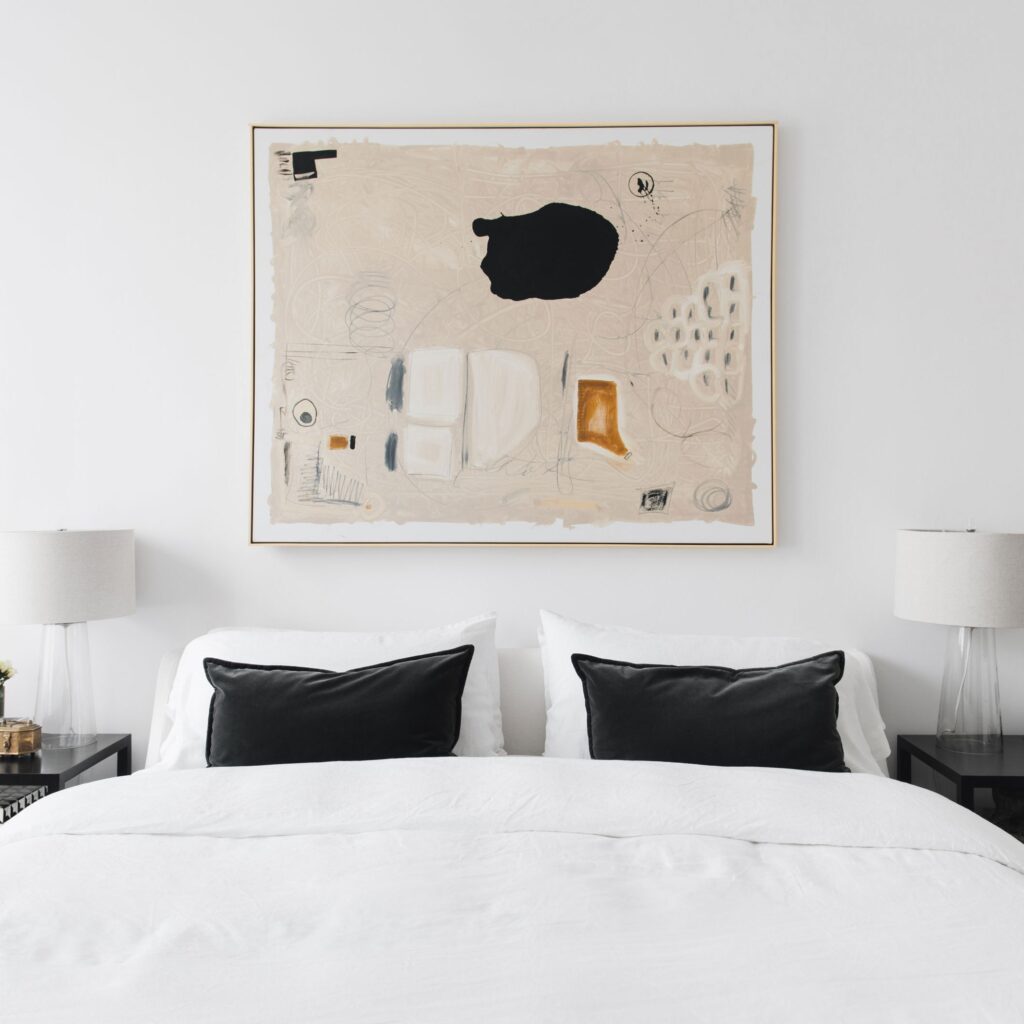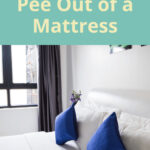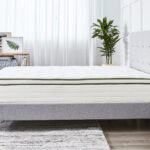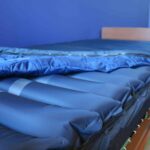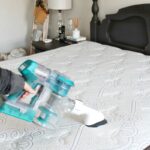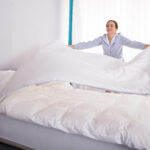If you are looking for a step-by-step guide on how to clean a used mattress, then you have come to the right place! This guide will provide you with all the information you need to successfully clean a used mattress, from the type of cleaning products you will need to the best techniques to get your mattress looking and smelling like new. With the right approach, you can restore your used mattress to its former glory in no time!
What You’ll Need
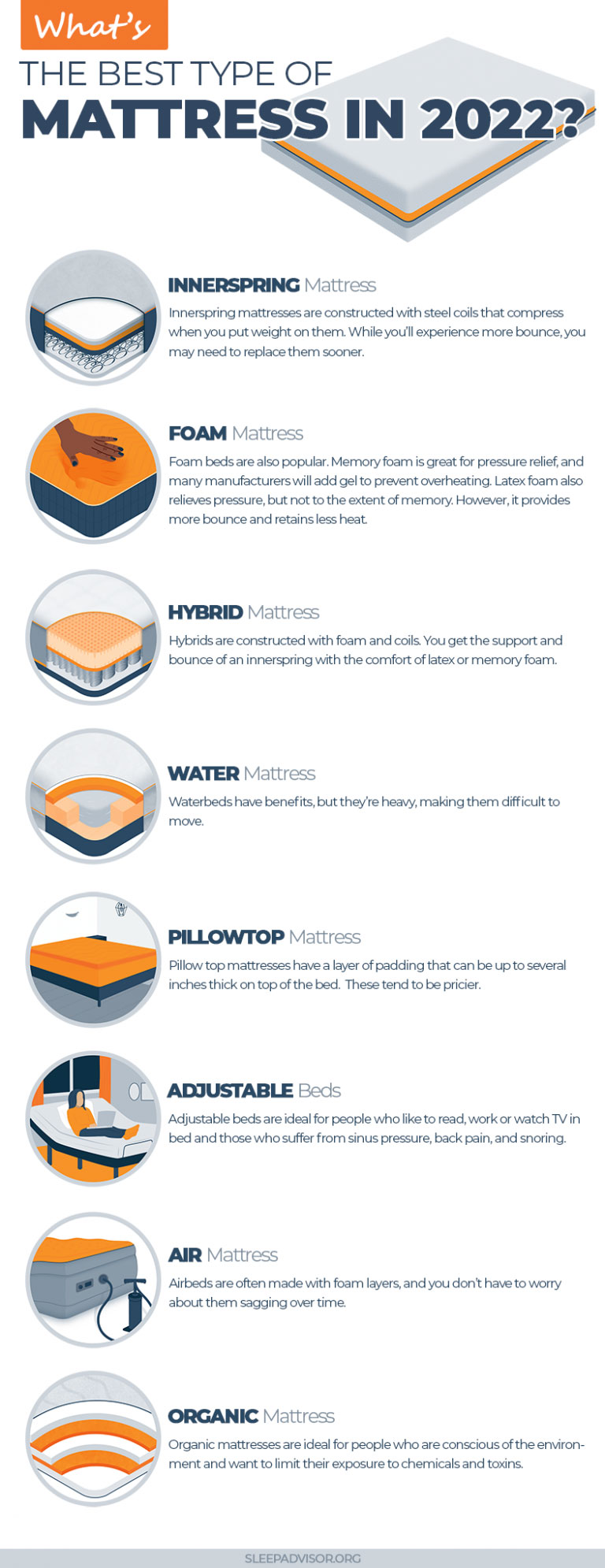
- Vacuum cleaner – to remove dust and dirt from the surface of your mattress
- Upholstery cleaner – to clean any stains or spills
- Baking soda – to deodorize and freshen up your mattress
- Soft-bristled brush – to scrub away any stubborn stains
- Clean cloths – to wipe away the cleaning solution
It’s important to have all these items on hand before you begin how to deep clean your mattress. A vacuum cleaner is essential to remove any dust and dirt from the surface. An upholstery cleaner is necessary to clean any stains or spills. Baking soda is great for deodorizing and freshening. A soft-bristled brush is great for scrubbing away any tough spots. Lastly, you’ll need some clean cloths to wipe away the cleaning solution.
Preparing the Mattress for Cleaning
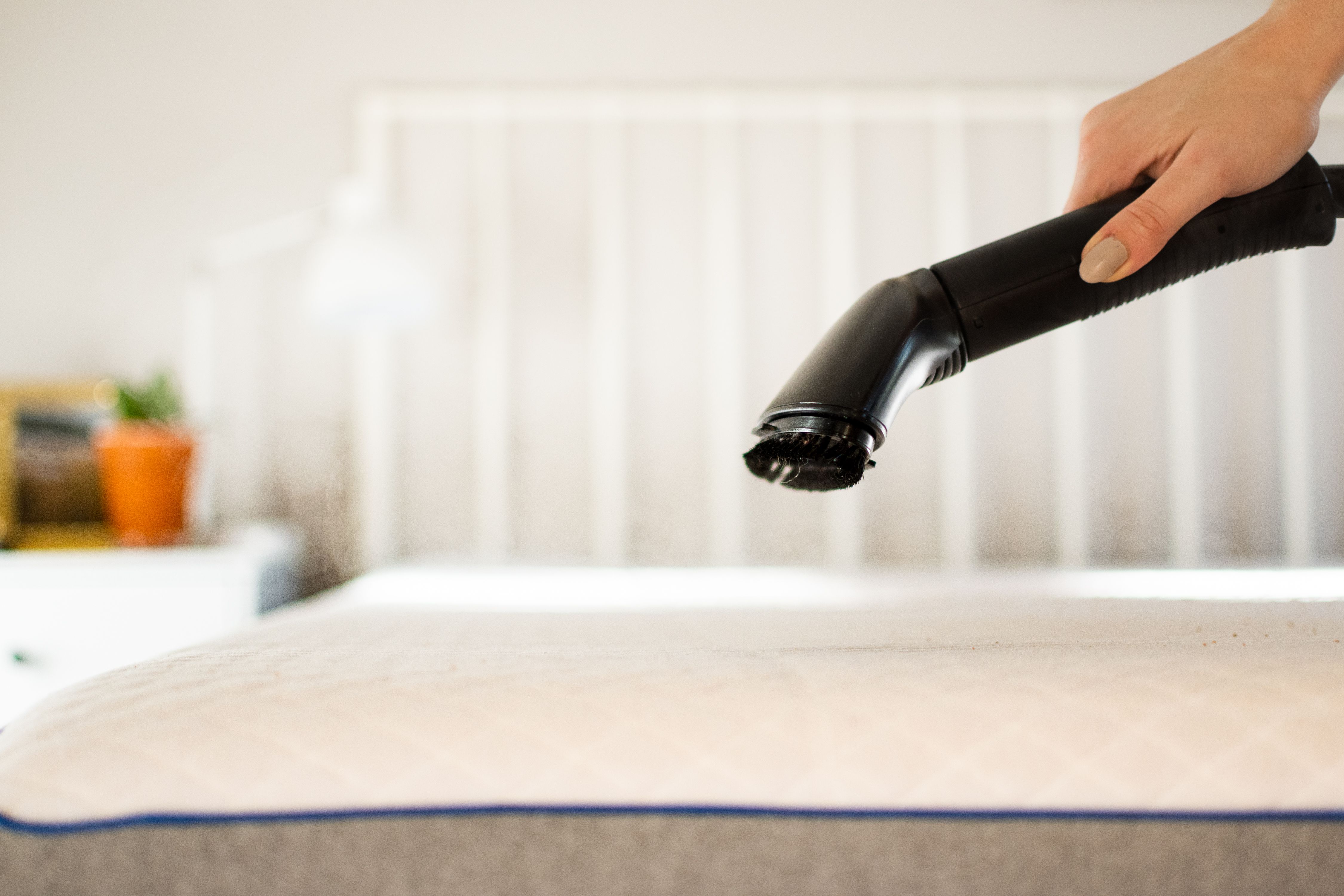
Before beginning the cleaning process, it is important to prepare the mattress. This includes removing all bedding and any other items that may be on the mattress, such as pillows and mattress covers. Vacuum the mattress to remove any surface dirt, dust, and debris. If there are any stains on the mattress, pretreat them with an appropriate cleaner.
Once the mattress is cleared of any clutter and dirt, it is important to disinfect it. Disinfectants such as bleach, vinegar, rubbing alcohol, and hydrogen peroxide are effective for killing germs and bacteria and should be used as part of the cleaning process. Follow the instructions on the disinfectant label to ensure proper use.
| Disinfectant | Instructions |
|---|---|
| Bleach | Mix one tablespoon of bleach with one gallon of water. Apply the solution to the mattress, let it sit for 10 minutes, then rinse with cold water. |
| Vinegar | Mix one cup of white vinegar with one gallon of water. Apply the solution to the mattress, let it sit for 15 minutes, then rinse with cold water. |
| Rubbing Alcohol | Mix one cup of rubbing alcohol with one gallon of water. Apply the solution to the mattress, let it sit for 5 minutes, then rinse with cold water. |
| Hydrogen Peroxide | Mix one cup of hydrogen peroxide with one gallon of water. Apply the solution to the mattress, let it sit for 10 minutes, then rinse with cold water. |
Once the mattress has been disinfected, let it air dry for at least an hour before proceeding with the cleaning process.
Vacuuming the Mattress
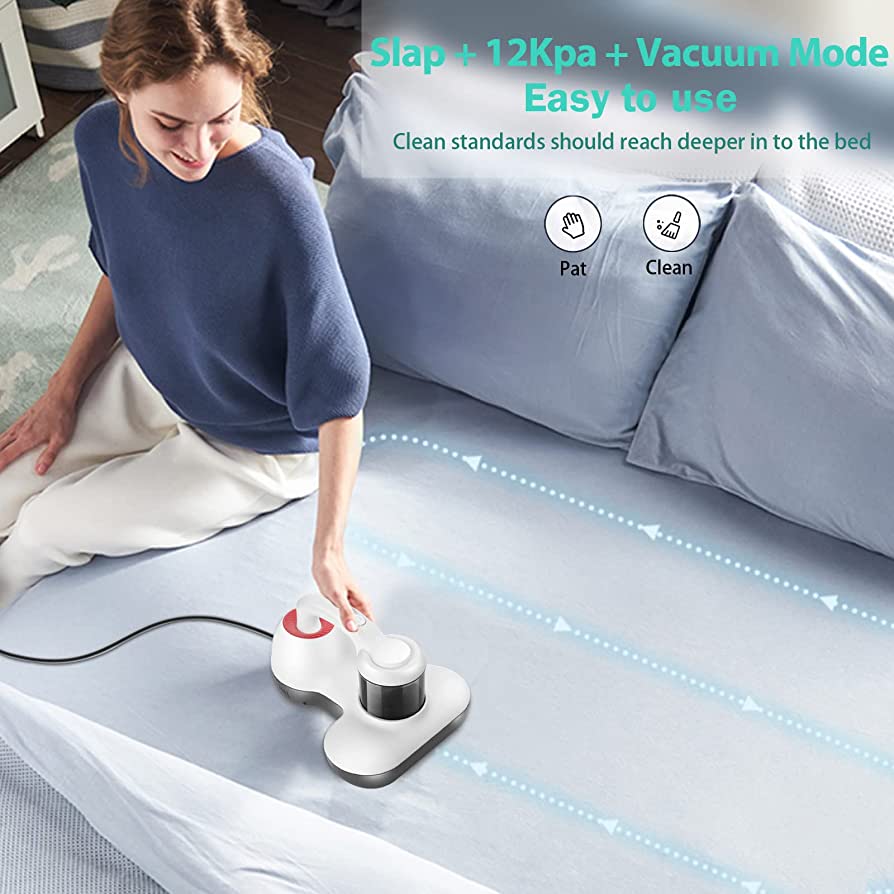
- Remove all bedding: To start vacuuming the mattress, make sure to remove all bedding such as sheets, mattress pads and pillow cases.
- Vacuum the entire surface: Begin by vacuuming the mattress in a slow and steady pattern, making sure to cover the entire surface.
- Pay special attention to seams: Pay special attention to the seams, creases and folds of the mattress, as these areas can often trap dust and other debris.
- Vacuum the box spring: Once the mattress is vacuumed, don’t forget to vacuum the box spring for a thorough cleaning.
- Use an upholstery attachment: For a more thorough cleaning, use an upholstery attachment to get into the hard to reach areas.
Spot Cleaning
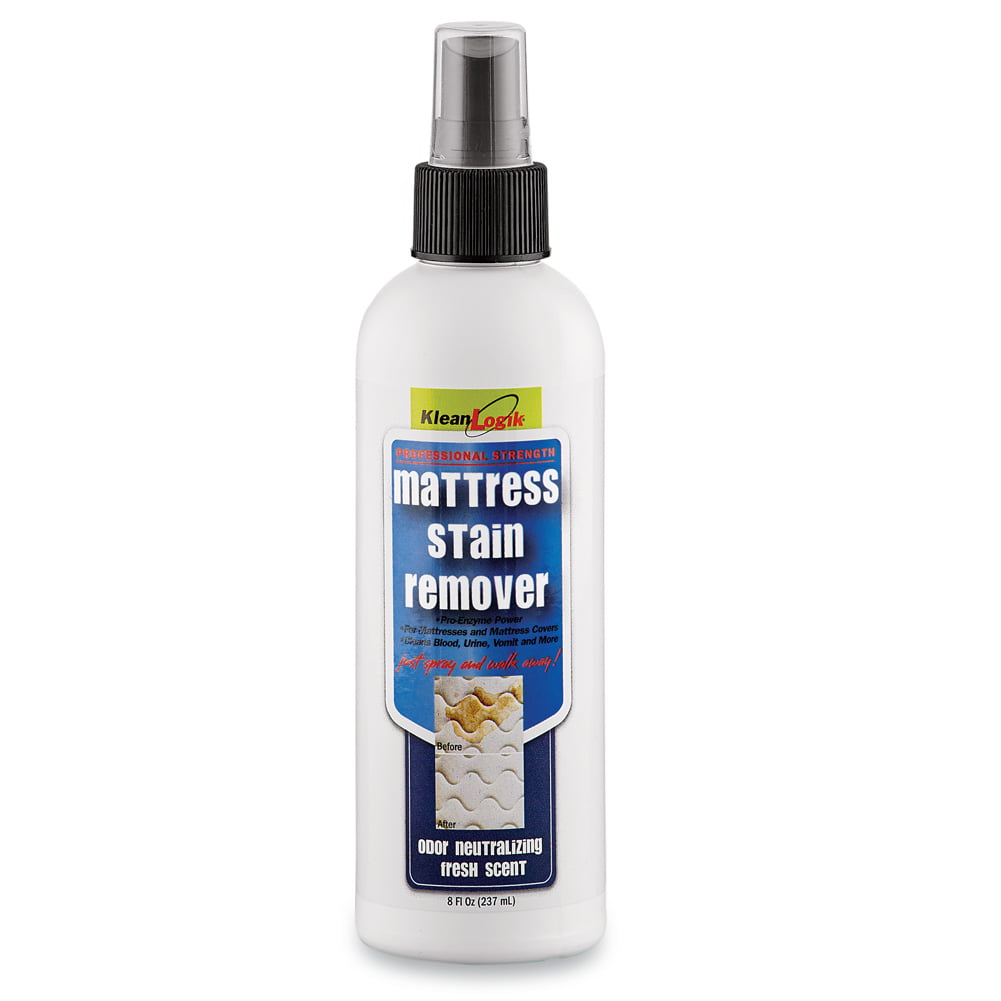
- Use a damp cloth to gently wipe off any spills or stains on the mattress.
- Stains caused by bodily fluids, such as sweat, vomit or urine, should be treated with a fabric-safe cleaning solution, like a mild detergent.
- Mix the solution with warm water and apply it to the stained area with a soft cloth or sponge.
- Allow the solution to sit for a few minutes before gently blotting it away with a dry cloth.
- Do not scrub or rub the area, as this can cause the stain to spread or become embedded deeper into the mattress.
- Do not use bleach or other harsh cleaning chemicals as these could damage the mattress fabric.
Cleaning the Mattress
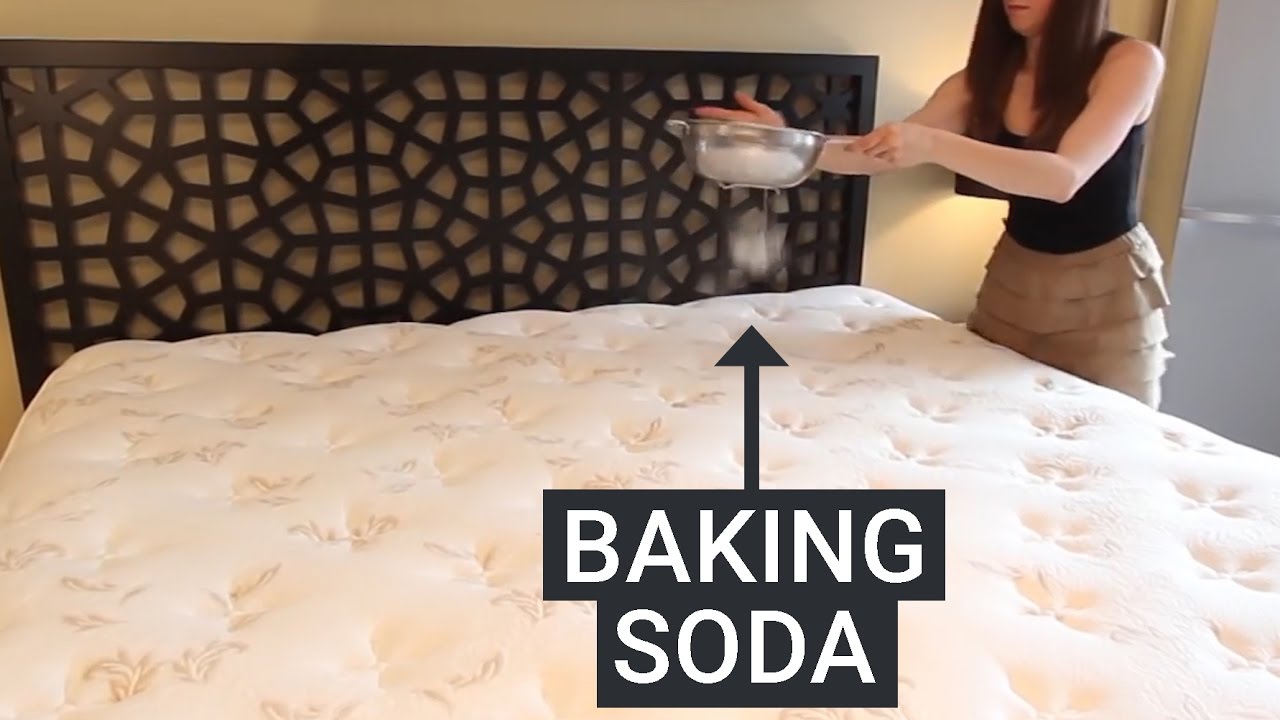
- Vacuum the mattress with an upholstery attachment to remove dust, dirt, and debris. Focus on seams, edges and crevices where dust and dirt can accumulate.
- Remove any stains with a stain remover. Test the remover in an inconspicuous area first and follow the instructions of the product.
- Deodorize the mattress with baking soda. Sprinkle the baking soda all over the mattress and let it sit for at least 15 minutes. Vacuum the baking soda off.
- Let the mattress air dry by opening the windows and using fans. Do not place the mattress in direct sunlight.
Deep Cleaning the Mattress
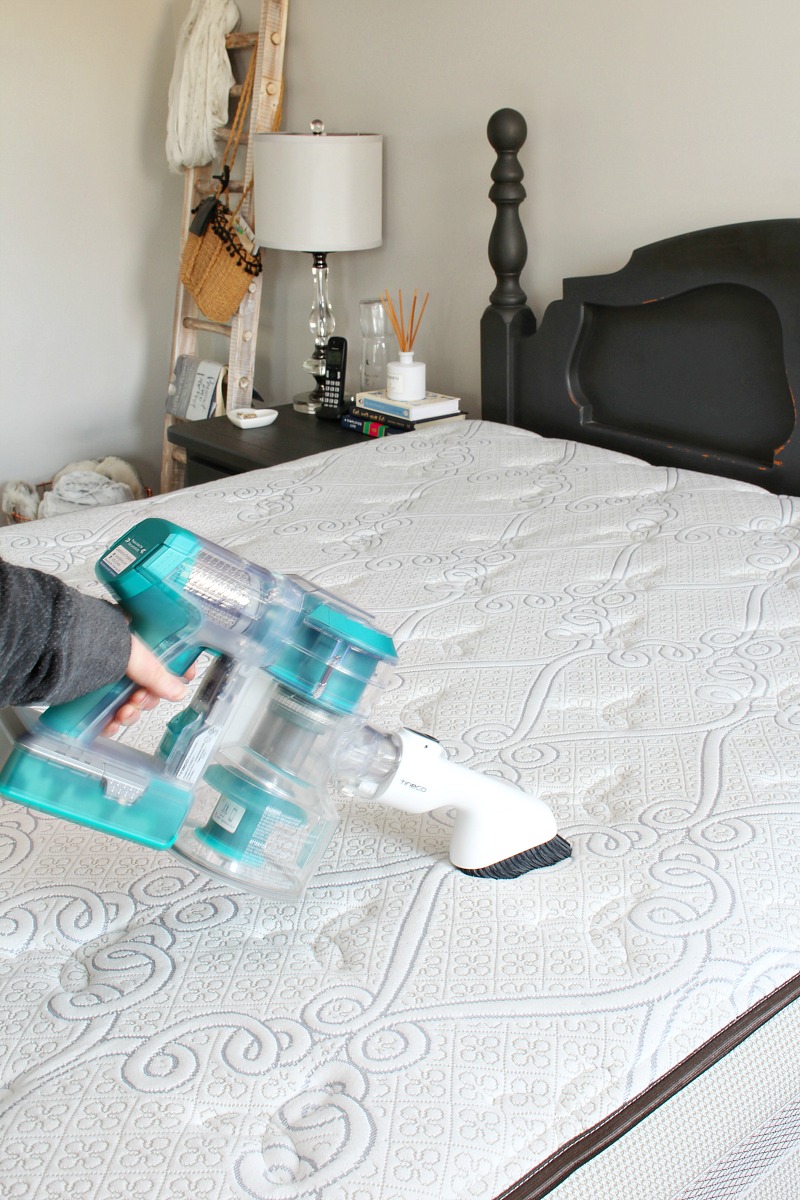
- Vacuum: Start by vacuuming the mattress with an upholstery attachment. Make sure to get into all the crevices and corners.
- Stain Treatment: Next, use a stain remover to treat any stains on the mattress. Leave the remover on the spot for the recommended time before blotting with a damp cloth.
- Deodorize: To deodorize the mattress, sprinkle baking soda over the entire surface and leave it overnight. Vacuum the mattress in the morning.
- Steam Clean: You can also steam clean the mattress for a deeper clean. Use a handheld or upright steam cleaner and follow the instructions for the best results.
- Air It Out: Finally, open the windows and let the mattress air out for a few hours. This will help get rid of any lingering odors.
Disinfecting the Mattress
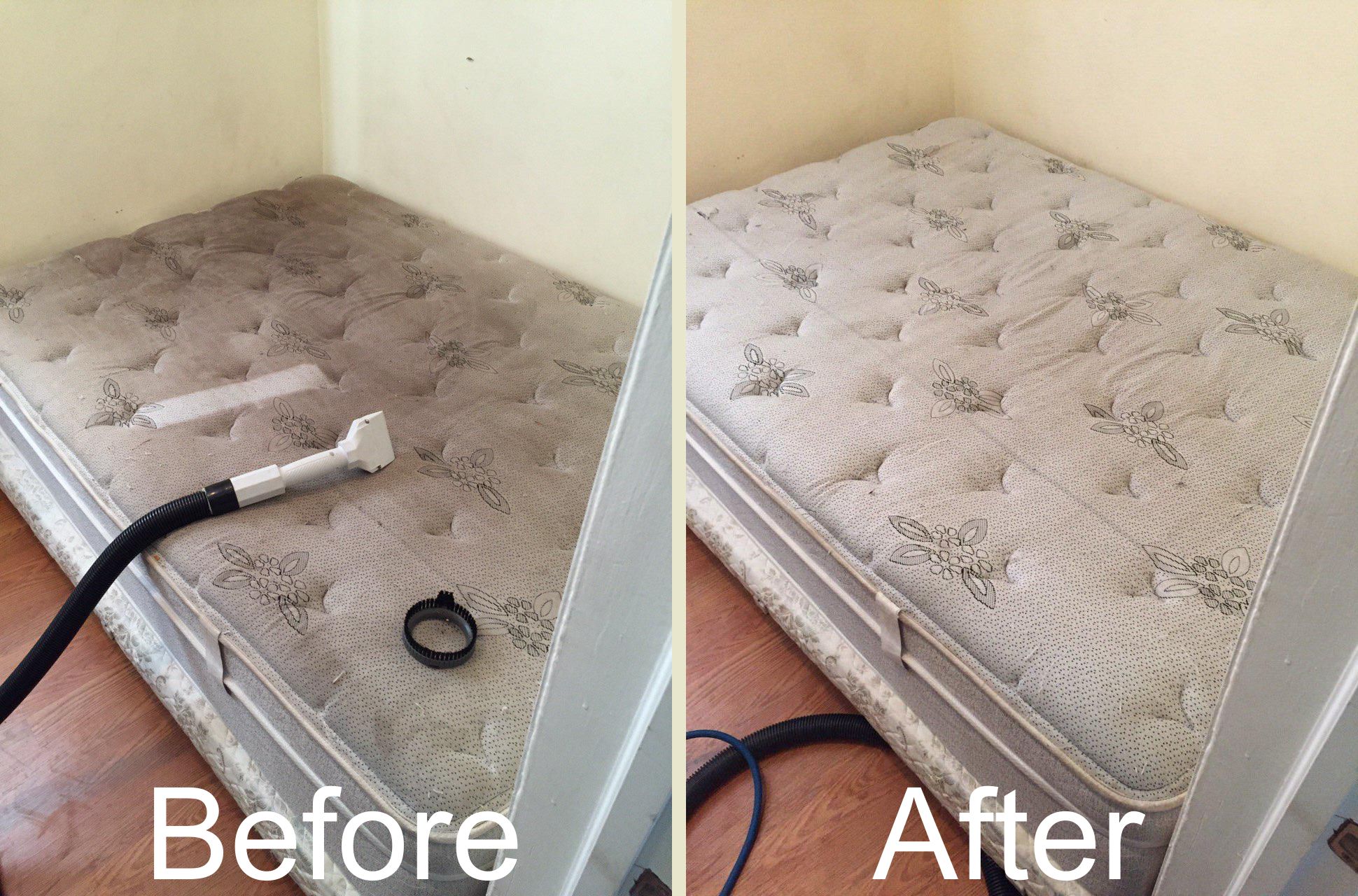
Vacuum: Start by vacuuming the mattress top to bottom, and end to end. Pay special attention to the seams and crevices, as these can be a hotspot for dust mites and other allergens.
Steam Clean: Once the mattress is vacuumed, use a steam cleaner to remove any remaining dirt and dust mites. This is a great way to disinfect the mattress without using harsh chemical cleaners.
Mold & Mildew Treatment: If you live in a humid climate, it’s important to check for signs of mold and mildew. If there are any signs of mold or mildew, use a mold and mildew treatment to prevent them from spreading.
Sanitize: Once you’ve finished vacuuming and steam cleaning the mattress, it’s time to sanitize it. There are several products on the market made specifically for sanitizing mattresses. Follow the instructions on the package for best results.
Air Dry: After the mattress is sanitized, allow it to air dry completely. This will ensure any remaining moisture is removed, which can help prevent mold and mildew growth.
Finishing Touches
- Vacuum the mattress: Vacuum the entire mattress to remove any remaining dust and debris. This step is especially important if you are dealing with a used mattress.
- Deodorize the mattress: Sprinkle a generous amount of baking soda over the entire mattress and let it sit for several hours. Vacuum up the baking soda once it has had time to absorb odors.
- Protect the mattress: Place a waterproof mattress cover over the mattress to help protect it from further damage.
Once you have completed these steps, your used mattress should be clean and fresh. To keep it clean and smelling fresh, vacuum periodically and make sure to change your bed sheets and mattress cover regularly. Additionally, you can use special mattress cleaning products such as steam cleaners and disinfectants to help kill germs and bacteria, and to reduce the risk of any potential health risks associated with sleeping on a used mattress.
Frequently Asked Questions
What Kind of Cleaning Supplies Do I Need for Cleaning a Used Mattress?
Vacuum Cleaner: A vacuum cleaner is essential for removing dust and dirt from the mattress. It should be equipped with a brush attachment to help reach deep into the mattress to remove stubborn dirt.
Cleaning Solutions: A mild detergent and water solution is ideal for spot-cleaning the mattress. For tougher stains, a stronger cleaning solution may be needed.
Soft Bristle Brush: A soft bristled brush can be used to scrub tough stains on the mattress.
Mildew Remover: If the mattress has any mildew or mold, a mildew remover should be used to eliminate it.
Mattress Cover: A mattress cover can help protect the mattress from further damage and make it easier to clean.
Air Freshener: A good air freshener can be used to help make the mattress smell fresh and clean.
Is it Safe to Use a Steam Cleaner on a Used Mattress?
Yes, it is safe to use a steam cleaner on a used mattress. Steam cleaning is a great way to get rid of dust mites, bacteria, and other allergens that may be lurking in your mattress. It also helps to sanitize and deodorize the mattress.
Here are the steps you should take to steam clean a used mattress:
- Vacuum the mattress to remove dirt, dust, and other debris.
- Choose a steam cleaner that is designed for use on mattresses and upholstery.
- Fill the steam cleaner according to the manufacturer’s instructions.
- Set the steam cleaner to the appropriate settings for your mattress.
- Start at the top of the mattress and move the steam cleaner slowly over the surface.
- Allow the mattress to dry thoroughly before putting on the sheets.
Steam cleaning a used mattress is a great way to freshen it up and keep it free of allergens. Be sure to follow the manufacturer’s instructions for your steam cleaner to ensure that you are using it safely and correctly.
Can I use a Vacuum Cleaner to Clean a Used Mattress?
Yes, you can use a vacuum cleaner to clean a used mattress. Start by vacuuming the mattress, paying special attention to the seams and crevices. Be sure to remove any visible debris and dirt. After vacuuming, use a handheld vacuum cleaner to remove dust mites and allergens from the mattress. Be sure to clean the vacuum filter regularly to prevent dirt from circulating back into the air.
How Often Should I Clean a Used Mattress?
Every few months, you should clean and sanitize your mattress to maintain a healthy sleep environment. Vacuum the mattress with an upholstery attachment to remove dust and debris. Spot clean any visible stains with an enzyme-based cleaner. Then, use a mattress protector to keep the mattress clean.
Is it necessary to use a Mattress Protector after Cleaning a Used Mattress?
Yes, it is necessary to use a mattress protector after cleaning a used mattress. A mattress protector adds a layer of protection and helps keep the mattress clean and free of dust, dirt, and allergens. It also prevents liquids and other materials from seeping into the mattress, which can damage and discolor the mattress. Furthermore, it helps to protect the mattress from wear and tear, extending its life.
Conclusion
Cleaning a used mattress is a straightforward process that can be done with common household products. Following the steps outlined in this guide and taking the proper precautions, you can safely and effectively clean a used mattress. With a little effort, you can enjoy a comfortable environment in your bedroom.
